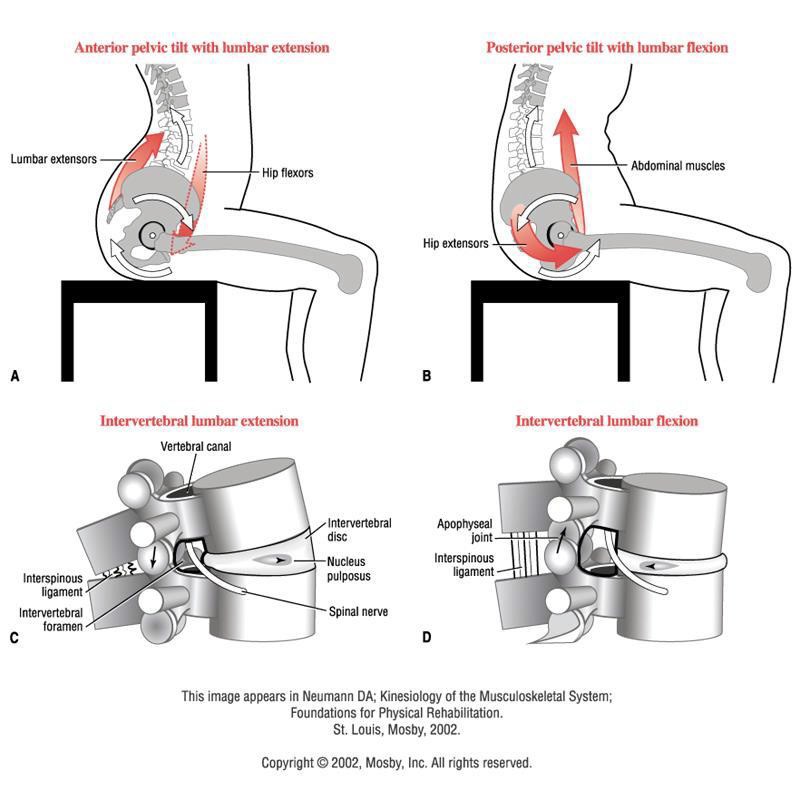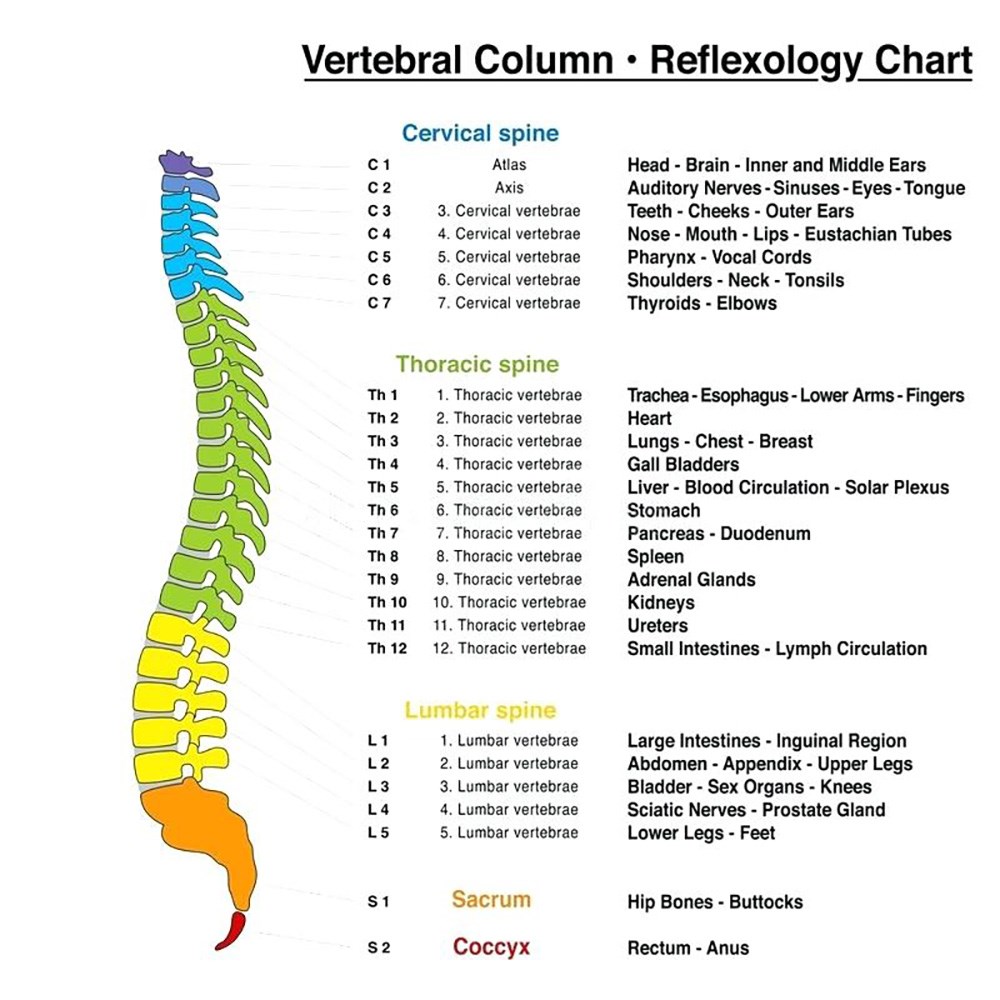Proper Hip and Spine Positioning
- When sitting the hips can rotate forwards or backwards:
- When hips rotate forward this is called anterior tilt
- When hips rotate backwards it is called posterior tilt
- Problems from Anterior Tilt:
- Hips rotate forward causing lengthened hip flexors and shortened lumbar extensors (Figure A)
- After long term exposure to this positioning the muscles will adjust to these improper lengths.
- Figure C shows how this position increases force on back side of intervertebral discs, which may cause it to bulge forwards. This could potentially lead to a herniated disc.
- Problems from Posterior Tilt:
- Hips rotate backward causing lengthened hip and lumbar extensors along with shortened hip flexors and abdominals.
- After long term exposure to this positioning the muscles will adjust to these improper lengths.
- Figure D shows how this position increases forces on the front side of intervertebral discs, causing it to bulge backwards. This could potentially lead to a herniated disc.
Proper positioning
- The Spine is not supposed to be perfectly straight, instead it should have the curves seen in the figure below.
- The spine is made to allow for some movement between each disc but when it is exposed to excessive force or long tem pressure problems can arise.
- Make sure to keep these natural curves so that the force on the discs are evenly distributed.
- To do this be sure not to slouch or over extend when working.


